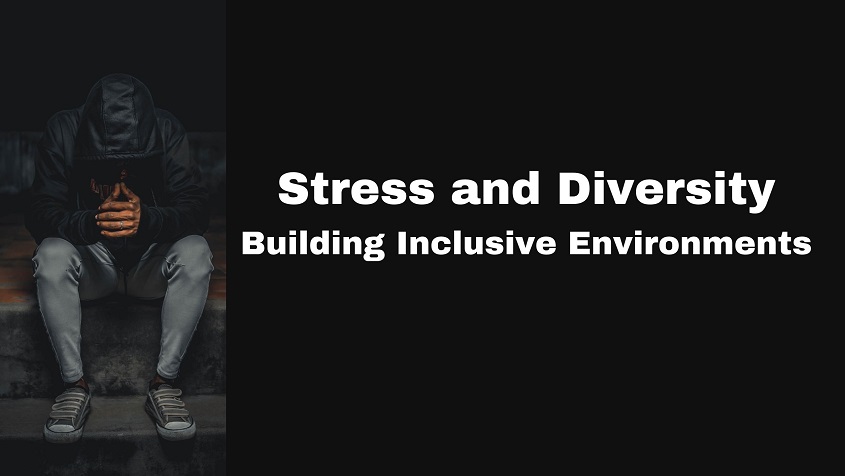Stress and Diversity: Building Inclusive Environments
In today’s interconnected and diverse world, fostering inclusivity has become vital to creating supportive environments where individuals from all walks of life can thrive.
Yet, the experience of navigating diversity can also bring about unique stressors for individuals and communities.
Understanding and addressing these stressors is essential for building inclusive environments that promote well-being and unity.
This post delves into the intricate relationship between stress and diversity, offering insights and strategies to help create spaces that celebrate differences and reduce the impact of stress within diverse communities.
The Impact of Diversity on Stress
Cultural Adjustment: Individuals from diverse backgrounds may experience stress adapting to a new culture, norms, and expectations.
Microaggressions: Subtle, often unintentional, discriminatory comments or behaviors can lead to stress and emotional strain.
Identity and Self-Image: Feeling different from the majority can lead to stress related to self-identity and acceptance.
Communication Challenges: Cultural and linguistic differences can hinder effective communication, leading to misunderstandings and stress.
Strategies for Building Inclusive and Stress-Resilient Environments
Educate and Raise Awareness
Offer diversity and inclusion training to increase awareness of different cultures, backgrounds, and experiences.
Foster Open Dialogue
Encourage open conversations about diversity and inclusion. Create safe spaces for individuals to share their experiences and perspectives.
Promote Cultural Competence
Provide resources for understanding different cultures, helping individuals become more culturally sensitive.
Address Microaggressions
Educate individuals about microaggressions and provide strategies for responding constructively to them.
Celebrate Differences
Organize events and activities that celebrate diverse cultures, promoting a sense of unity and understanding.
Support Mental Health
Offer culturally sensitive mental health resources that cater to diverse communities’ unique stressors.
Foster Inclusive Leadership
Encourage leaders to model inclusive behaviors and create an environment where all the voices are heard and valued.
Create Affinity Groups
Establish affinity groups for individuals with shared cultural backgrounds to provide a supportive network.
Promote Multilingual Communication
Ensure that communication materials are accessible in multiple languages to accommodate diverse linguistic backgrounds.
Cultivate Empathy
Encourage individuals to step into others’ shoes, fostering empathy and understanding of different perspectives.
Conclusion
Creating inclusive environments that celebrate diversity requires intentional effort, empathy, and a commitment to addressing the unique stressors faced by individuals from various backgrounds.
By educating, promoting awareness, and fostering open dialogue, you can build spaces that promote unity, reduce stress, and cultivate a sense of belonging for all. Remember that diversity enriches our communities and provides a wealth of perspectives that contributing to growth and innovation.
By embracing diversity and fostering inclusivity, you contribute to the well-being of individuals, communities, and society.

